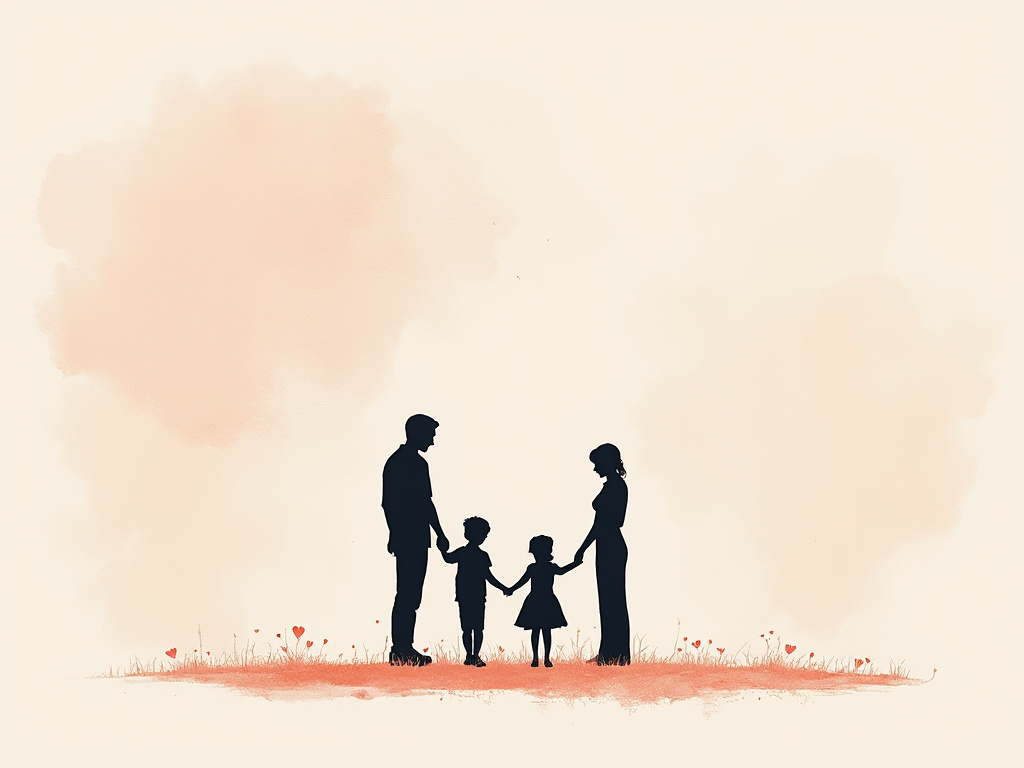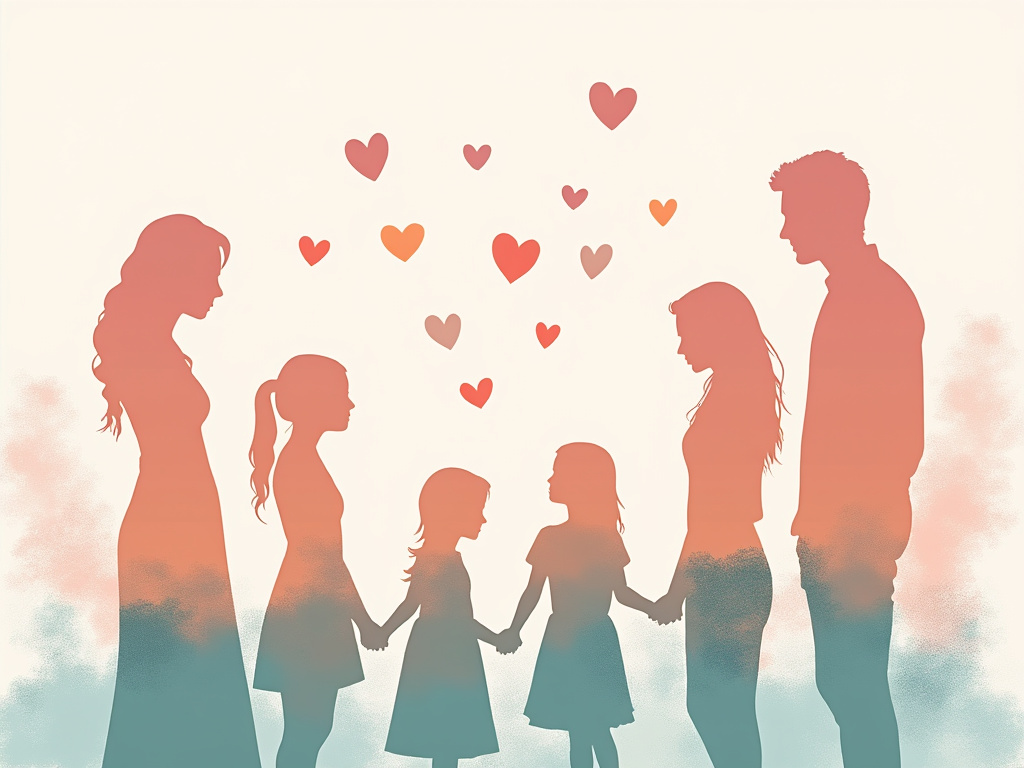
Navigating Family Conflict: When Arguing in Front of Children Becomes a Learning Opportunity
Reading time: 8 minutes
Ever found yourself mid-argument with your partner when you suddenly realize little eyes are watching? You’re not alone. The reality is that 89% of children witness parental disagreements before age five, making this one of the most universal yet misunderstood aspects of family dynamics.
Table of Contents
- Understanding the Real Impact on Young Minds
- When Conflict Actually Helps Children Grow
- Age-Appropriate Guidelines for Family Disagreements
- Damage Control: Turning Arguments into Teaching Moments
- Creating Your Family’s Conflict Resolution Framework
- Frequently Asked Questions
- Building Emotional Resilience for the Future
Understanding the Real Impact on Young Minds
Let’s start with the straight talk: Not all arguments are created equal, and the impact on your toddler depends heavily on how you argue, not just whether you argue.
Dr. Mark Cummings from the University of Notre Dame, who has studied family conflict for over three decades, reveals something surprising: “Children as young as six months old show physiological stress responses to angry voices, but they also demonstrate remarkable resilience when they witness constructive conflict resolution.”
The Neuroscience Behind Little Listeners
Toddlers’ brains are incredibly sensitive to emotional tone and body language. Research from the American Academy of Pediatrics shows that children between 18 months and 3 years old:
- Process emotional intensity faster than verbal content
- Mirror stress hormones released by arguing parents
- Store conflict patterns as templates for future relationships
- Develop coping mechanisms based on resolution outcomes they observe
What Really Damages vs. What Actually Helps
Here’s where conventional wisdom gets it wrong. A landmark study following 1,000 families over 15 years found that children from homes with zero conflict often struggled more with relationship skills than those who witnessed constructive disagreements.
Real-World Example: Sarah, a mother of two toddlers, discovered this firsthand. “I thought keeping everything peaceful was best. But when my 4-year-old had a playground disagreement, she completely shut down—she’d never seen healthy conflict resolution modeled.”
When Conflict Actually Helps Children Grow
Counterintuitive as it sounds, witnessing certain types of disagreements can actually strengthen your toddler’s emotional intelligence. The key lies in understanding the difference between destructive and constructive conflict.
The “Goldilocks Zone” of Family Arguments
Child psychologist Dr. E. Mark Cummings identifies what he calls the “just right” level of conflict exposure:
| Conflict Type | Toddler Impact | Long-term Outcome | Recommended Frequency |
|---|---|---|---|
| Constructive Problem-Solving | Increased attention, learning | Better relationship skills | 2-3 times per week |
| Emotional Expression | Temporary stress, then curiosity | Emotional vocabulary growth | Weekly |
| Silent Treatment | Anxiety, confusion | Communication avoidance | Never recommended |
| Personal Attacks | Fear, fight-or-flight response | Relationship trauma | Never acceptable |
Case Study: The Martinez Family Transformation
Consider the Martinez family, who participated in a University of Rochester study. Initially, they avoided all disagreements around their 2-year-old daughter, Sofia. After learning constructive conflict principles, they began modeling healthy disagreements about household decisions.
“Within six months, Sofia started using phrases like ‘I disagree’ and ‘let’s find a solution’ during her own conflicts with peers,” reports study coordinator Dr. Jennifer Green. “Her emotional regulation scores improved by 40%.”
Age-Appropriate Guidelines for Family Disagreements
The developmental stage of your child fundamentally changes what’s appropriate. Here’s your practical roadmap:
For Toddlers (18 months – 3 years)
Safe Topics:
- Household logistics (dinner plans, schedule conflicts)
- Parenting approach differences (bedtime routines, discipline styles)
- Financial decisions that don’t involve security fears
Communication Guidelines:
- Keep disagreements under 5 minutes in their presence
- Use “I feel” statements rather than “You always” accusations
- Maintain calm body language (no pointing, door slamming, or aggressive gestures)
- End with visible resolution or agreement to continue later
Visual Guide: Conflict Intensity Levels and Toddler Readiness
Appropriate Conflict Levels by Age
30% – Very mild disagreements only
60% – Moderate discussions with resolution
80% – Include them in simple problem-solving
0% – Personal attacks, threats, or hostile conflict
Damage Control: Turning Arguments into Teaching Moments
What happens when an argument escalates beyond your intended boundaries? The repair process is often more important than the initial conflict.
The 24-Hour Recovery Protocol
Dr. John Gottman’s research with over 3,000 families provides a clear framework for post-conflict repair with toddlers present:
Immediate Response (Within 2 hours):
- Acknowledge their presence: “You saw Mommy and Daddy having a disagreement.”
- Validate their feelings: “That might have felt scary or confusing.”
- Demonstrate resolution: Show physical affection between partners
- Reassure security: “We love each other and we love you. Families sometimes disagree, but we always work things out.”
Pro Tip: Toddlers need to see the “after” more than adults do. A 30-second hug between parents can undo hours of anxiety for a young child who witnessed conflict.
Advanced Strategy: The Family Feelings Check-In
For families with toddlers approaching 3 years old, implementing a simple emotional check-in system can transform conflict from scary to educational:
The Simple Framework:
- “What did you notice?” (Encourages observation skills)
- “How did that make you feel?” (Builds emotional vocabulary)
- “What happened next?” (Emphasizes resolution and problem-solving)
Creating Your Family’s Conflict Resolution Framework
Every family needs personalized guidelines that reflect their values, communication styles, and children’s temperaments. Here’s how to build yours:
Step 1: Assess Your Current Patterns
Track your disagreements for one week. Note frequency, topics, intensity levels, and your toddler’s reactions. Most families discover they argue about the same 3-4 topics repeatedly.
Step 2: Establish Your Family’s “Conflict Constitution”
Create clear agreements about:
- Safe spaces: Which rooms are okay for disagreements
- Time boundaries: How long is too long in front of children
- Topic limits: What subjects require private discussion
- Resolution requirements: How to end disagreements constructively
Real Family Example: The Chen Family Rules
After their 3-year-old started having nightmares following a heated budget discussion, the Chens developed these guidelines:
- Kitchen Timer Rule: Arguments in front of Emma max out at 3 minutes
- Emotion Labeling: Always name feelings (“I’m frustrated about…”)
- Resolution Ritual: End with either a solution or “We’ll talk more about this later”
- Recovery Routine: Emma helps make a snack while parents discuss feelings
Result: Emma’s anxiety decreased, and she began using similar problem-solving language with friends.
Frequently Asked Questions
Should I apologize to my toddler after they witness an argument?
Yes, but focus on the process, not the content. Say something like: “You saw Daddy and I talking loudly about grown-up things. We should have used quieter voices. We’re okay, and we love you.” Avoid over-explaining the argument’s details, which can increase anxiety.
My toddler becomes aggressive after seeing us argue. How do I address this?
This is normal mirroring behavior. First, model calm conflict resolution consistently. Then, when your toddler shows aggression, guide them: “I see you’re having big feelings. Let’s use words instead of hitting. Can you tell me what’s bothering you?” Consider reducing conflict intensity temporarily while building their emotional vocabulary.
Is it better to argue when toddlers are asleep or out of the house?
Minor disagreements benefit from toddler observation because they learn resolution skills. However, complex emotional issues, financial stress, or relationship problems should be discussed privately. The rule of thumb: if the topic makes you feel vulnerable or scared, it will overwhelm your toddler.
Building Emotional Resilience for the Future
The goal isn’t perfect harmony—it’s raising children who can navigate relationship challenges with confidence and skill. When you model healthy conflict resolution, you’re essentially providing your toddler with a relationship roadmap they’ll use for decades.
Your Action Plan for This Week:
- Observe and track: Notice your family’s conflict patterns without judgment
- Choose one improvement: Focus on either volume control, time limits, or resolution consistency
- Practice repair: After any disagreement, implement the 24-hour recovery protocol
- Build vocabulary: Introduce emotion words during calm moments to prepare for conflict situations
- Celebrate progress: Acknowledge when conflicts end well, both to your partner and your child
Remember: Your toddler is learning from every interaction they witness. By thoughtfully managing family conflict, you’re not just maintaining peace—you’re teaching them that relationships can weather storms and grow stronger.
As families continue evolving in our increasingly complex world, the ability to navigate disagreement constructively becomes even more valuable. The question isn’t whether your child will face conflict in their future relationships, but whether they’ll have the tools to handle it with grace and wisdom.
What small change will you implement today to transform your family’s approach to conflict from something to avoid into something that builds stronger connections?

Article reviewed by Mateusz Kowalski, Family Psychologist | Navigating Generational Conflicts with Empathy, on May 29, 2025
